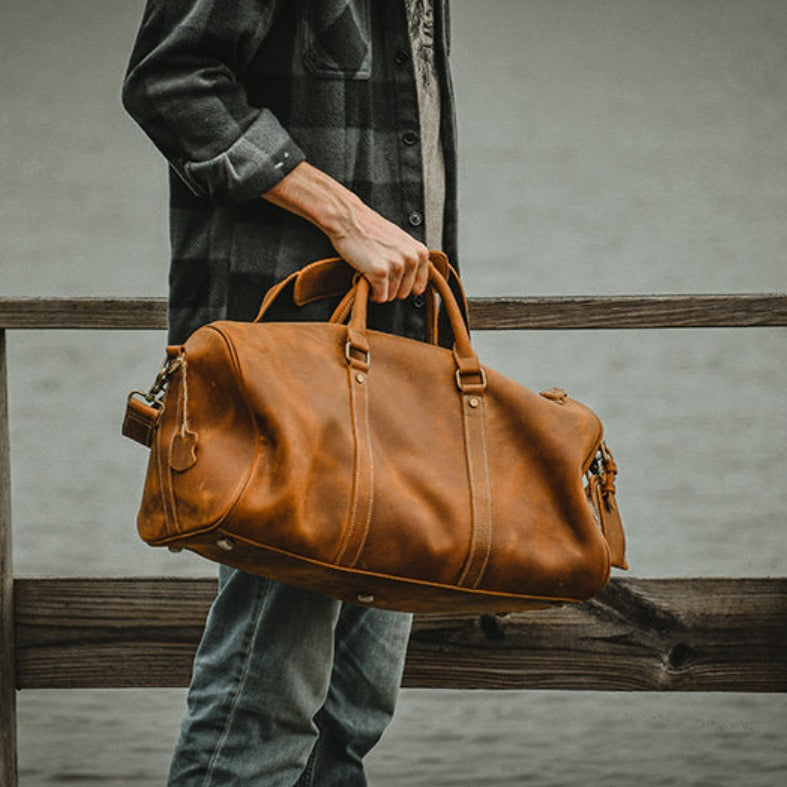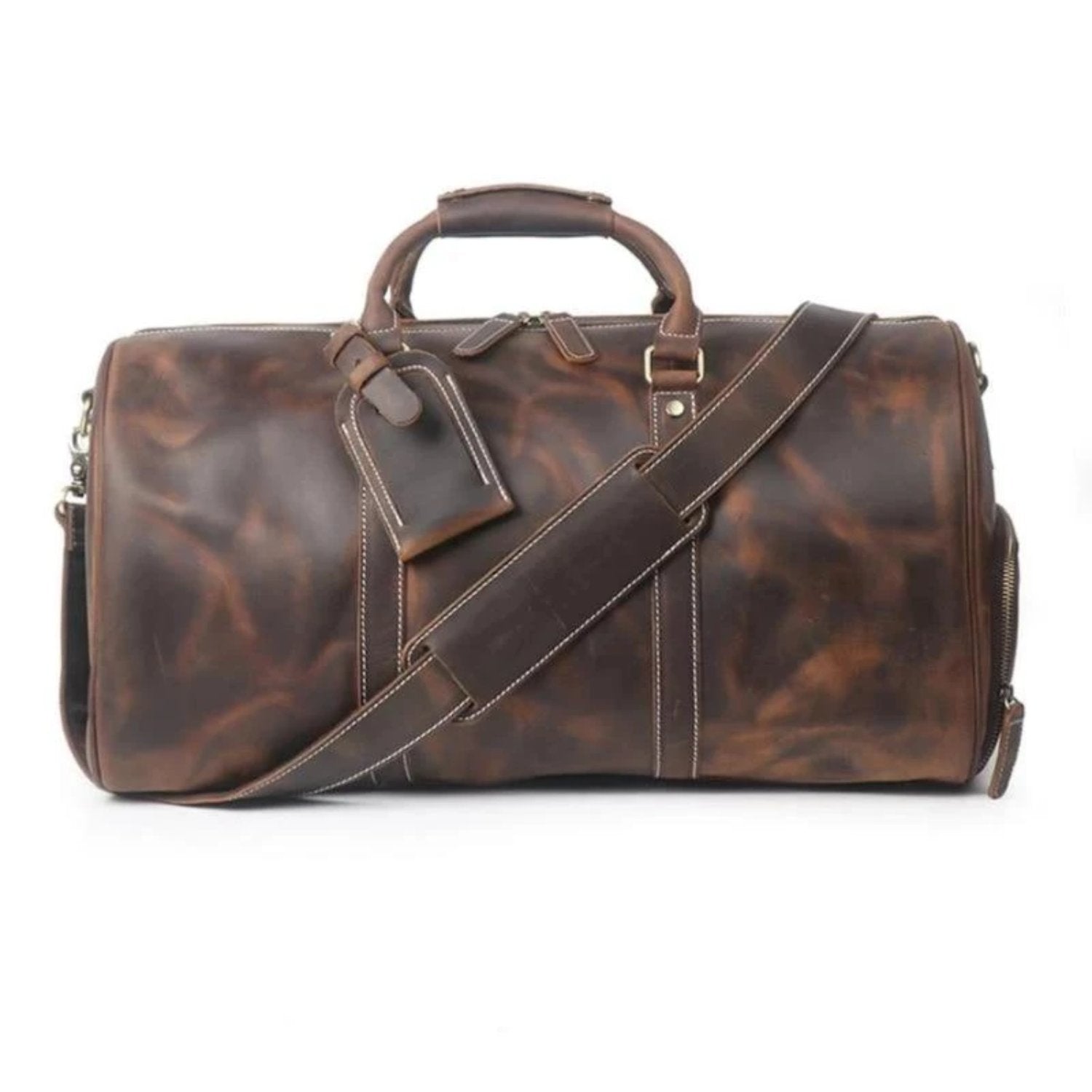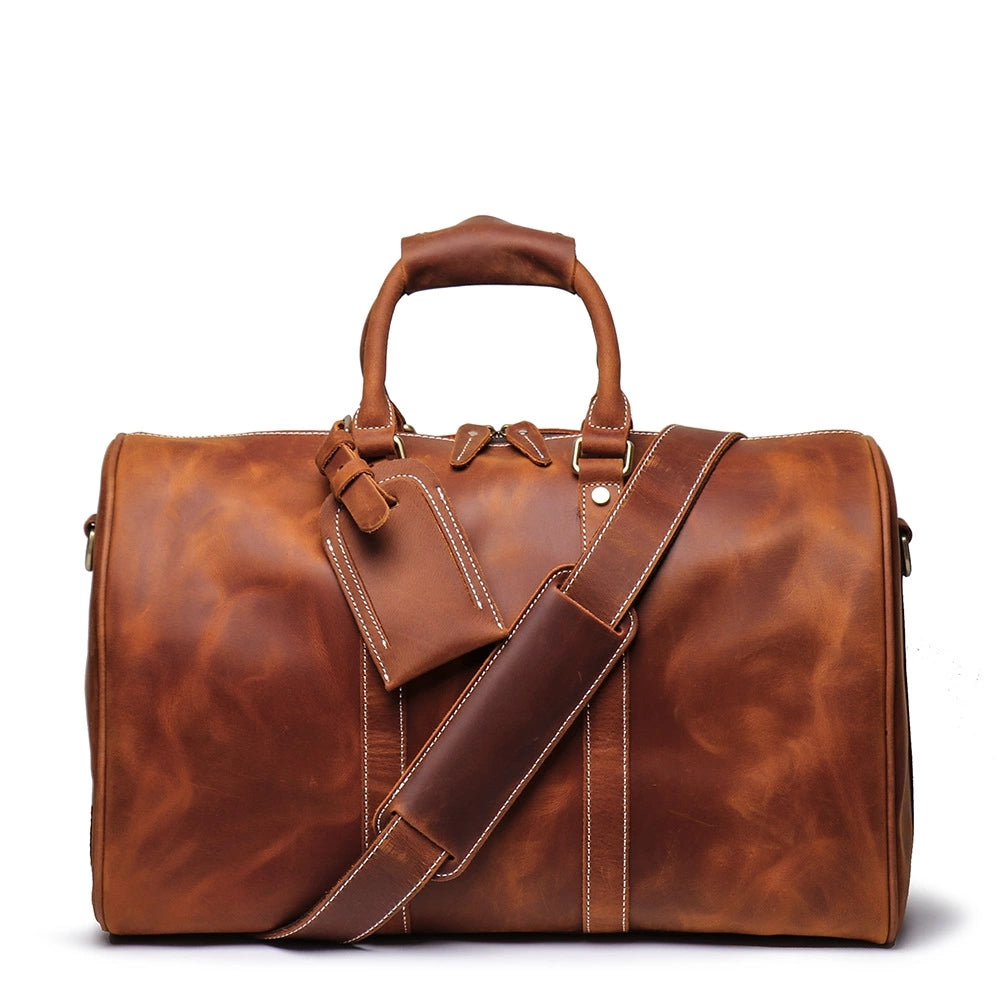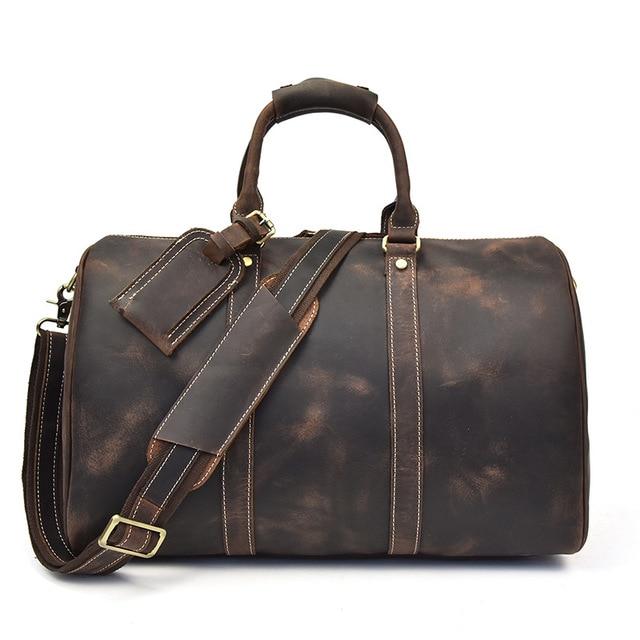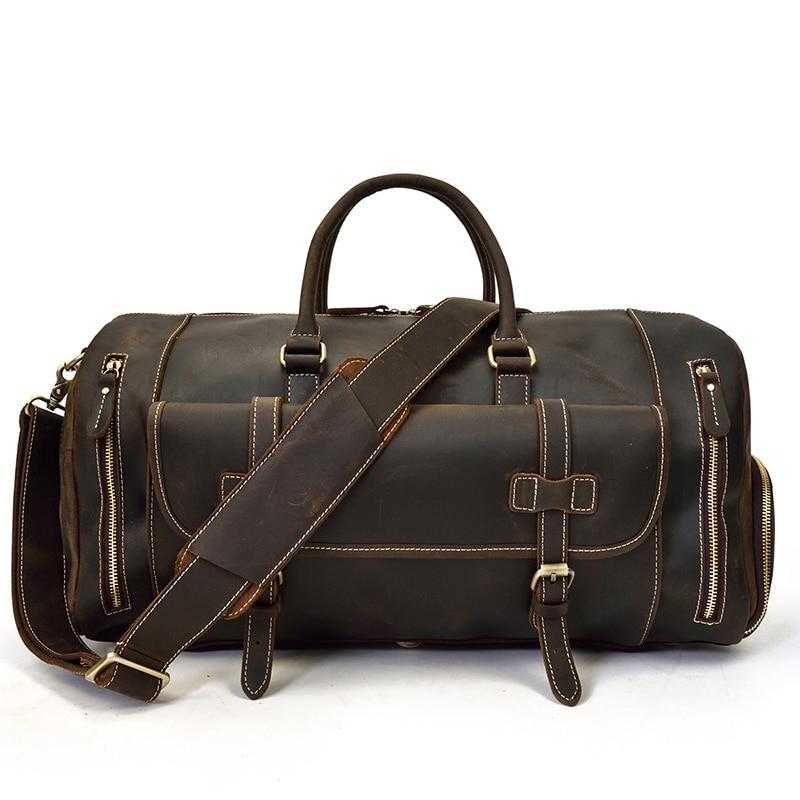Leather is a luxurious material that adds style and sophistication to any space. However, water damage can ruin the appearance of leather, leaving unsightly stains and marks. You don't need to worry anymore, because we are going to tell you what you need to know about fixing water damage to your leather items in this blog. We'll start by explaining what happens when water meets leather, followed by tips to prevent future damage. We will assist you in drying your leather item properly and repairing any stains in case it becomes wet. Finally, we'll share some long-term care tips to keep your leather looking its best for years to come. Read on to learn how to protect your investment and save your favorite leather items from water damage.
Key Takeaways
-
Act quickly when leather gets wet - immediate action prevents permanent damage and reduces the severity of water stains
-
Never use heat sources like hair dryers or direct sunlight to dry wet leather, as this can cause cracking and brittleness
-
Regular conditioning is essential for leather maintenance, keeping it supple and more resistant to water damage
-
Prevention is more effective than repair - use leather protectors, waterproofing sprays, and avoid exposure to moisture when possible
-
Different types of leather require different care approaches, with suede being particularly vulnerable to water damage
Why Trust Our Leather Care Expertise?
At Steel Horse Leather, we bring decades of hands-on experience working with premium leather goods to every piece of advice we share. Our master artisans have dedicated their lives to perfecting the craft of leather working, combining traditional methods with deep knowledge of how different leather types respond to various conditions, including water exposure. This intimate understanding of leather's properties—from its porous nature to how different grades react to moisture—comes from years of sourcing, processing, and crafting genuine leather products.
We've built our reputation on understanding leather inside and out. Our commitment to quality extends beyond just creating beautiful bags; we've thoroughly vetted leather suppliers, studied tanning processes, and observed how different treatments affect leather's durability and appearance over time. When we share techniques for preventing and repairing water damage, we're drawing from real-world experience of what works to preserve leather's natural beauty and extend its lifespan. Our holistic approach to leather care ensures that every recommendation we make has been tested and proven effective in maintaining the integrity of genuine leather goods.
Understanding Leather Water Damage

Maintaining the quality of leather products can be challenging, especially when it comes to water damage. Water damage can result in spotting, staining, or swelling of the leather item. If you see water damage on your leather item, act quickly to remove the wetness. Do not use heat to dry the wet area. If the damage is more severe, seek help from a professional restorer, or use special care products to fix damaged leather. Taking immediate action and using appropriate products will help you ensure that your leather lasts a long time.
What Happens When Water Meets Leather?
Leather is a special material that makes something look fancy and sophisticated. It needs to be taken care of carefully to keep it looking good. Unfortunately, when water meets leather, things can quickly go awry. Leather is a porous material, and moisture can easily get into it and cause damage. Damage can happen when the leather gets dry, stiff, cracks, or tears. How much water was absorbed and how long it was left untreated determine the severity. This is why it's important to take action right away if you see damage to your leather item.
The Effects of Water on Different Types of Leather
Water can damage leather. Different types of leather react differently when exposed to water. Top-grade leather lasts longer and is stronger, but it may change color and stiffness and get wet. Suedeis particularly vulnerable to water damage and should be treated with a waterproofingspray. It's important to act quickly if you see water damage on your leather seats. If you do not treat the damage properly, it can become permanent. Use special care products to restore the leather to its original condition. Taking care of your furniture to keep it safe from water, covering it, caring for it regularly, and keeping pets away from it, is better than curing the problem.
How to Prevent Leather Water Damage

Maintaining the quality of your leather items is crucial to ensure their longevity. Protecting your leather goods from water damage is important. There are a few things you can do to keep them safe. Applying a leather protector or waterproofing spray can go a long way in keeping your items safe from water damage. It is important to keep them away from water and dry them right away if they get wet. You should keep them in a dry and ventilated place to prevent them from getting wet. By taking these simple precautions, you can protect your genuine leather items and prevent costly repairs.
Avoiding Exposure to Water
If you want to avoid water damage on your leather items, prevention is key. Leather is naturally prone to damage from water, so it's important to take preventive measures. One of the best ways to protect your leather is to avoid exposing it to water as much as possible. This means keeping your leather away from rainy weather and bodies of water.
Quickly dry the wet leather with a soft cloth and let it completely dry before using it again if you get wet in the rain. You can also use leather protectant sprays to repel water and prevent damage. Regular conditioning of leather can also help maintain its quality and make it more resistant to water damage.
Conditioning Your Leather Regularly
Maintaining the quality of your leather items requires a commitment to regular conditioning. Leather is prone to water damage, which can cause it to become discolored or cracked. Regularly using a good leather conditioner can prevent the leather from getting wet and becoming stiff and dry. Conditioning leather keeps it more resistant to water damage while also preventing cracking that could be caused by excessive dryness. Moreover, conditioning your leather also helps protect it from environmental factors such as sunlight and humidity, extending its lifespan significantly. Remember to avoid exposing your leather items to excessive moisture and store them in a dry area.
Use a Leather Protector
Using a good quality leather protector can help you protect your leather items from getting wet more easily. It forms a barrier between the leather and water, making it stronger against damage. When choosing a leather protector for your item, make sure to buy one that is designed for the type of leather you have. Taking care to dry your items well can keep them looking good longer. This helps prevent stains and dulling. Additionally, some protectors may provide additional benefits such as UV protection or conditioning properties.
Condition the Leather Regularly
Maintaining the quality of your leather items is crucial to prevent waterdamage. Regular conditioning steps can help keep the leather supple and hydrated, making it less prone to cracking or fading. Conditioning products prevent water damage to your leather items. They help make them stay good for longer. It's important to select a high-quality conditioner that is compatible with the type of leather you have. Apply the conditioner evenly over the entire leather surface and let it soak in before wiping away any excess. Keep your leather fresh by treating it every few months.
Use Coasters
Using coasters is a simple and effective way to prevent water damage on your leather items. Coasters keep your drinks and food dry by keeping them off the leather. By using coasters, you can avoid unsightly water stains on your leather furniture, your leather bag, or your leather shoes.
Avoid Harsh Chemicals
When it comes to caring for your leather items, using harsh chemicals can do more harm than good. These chemicals, such as bleach and ammonia, can cause discoloration and damage to the leather. To keep your leather looking good, use a special, gentle cleaner and conditioner for leather. Using a waterproofingspray on your leather can prevent it from getting wet and ruined. If it becomes wet, you should dry it slowly using heat sources such as a hair dryer or sunlight. This can cause cracking and damage over time. Let it dry naturally, and use treatment to keep it moisturized and protected from water damage.
Keep Pets Off the Furniture
Pets are undoubtedly adorable, but their love for furniture can cause significant damage to your leather belongings. Pets have hard teeth and claws that can damage your furniture if they bite it. This makes your furniture more likely to get wet and damaged. Moreover, pet saliva and urine can also harm the leather material, leading to discoloration or odors.
Clean Up Spills Immediately
Leatheris highly susceptible to water damage, making it crucial to act quickly when water spills occur. Cleaning up spills quickly can help prevent damage. Use a soft cloth to absorb the moisture, and do not use heat to dry the leather. Additionally, remember to regularly condition your leather to keep it flexible and resistant to moisture. By following these steps, you can ensure your leather stays looking its best for years to come.
What to Do When Your Leather Gets Wet

Leather is a delicate and beautiful material that can quickly become damaged when exposed to water. If your leather item has gotten wet, it's crucial to act fast to prevent any further damage. Start by removing any excess water from the surface using a soft cloth.
Do not use heat to dry leather. This can damage it more. Instead, let it dry naturally and use a leather conditioner to restore its moisture and prevent cracking or stiffness. If you're unsure how to proceed or the damage is extensive, consider seeking leather experts for a repair.
Drying Wet Leather
Wet leather can be a nightmare to deal with, and it's crucial to dry it properly to prevent further damage. To dry wet leather, do not use heat sources like hairdryers or heaters. This can cause the leather to crack and become brittle. Instead of drying the leather in a room, leave it out in the air to dry. This can be done by having a fan or dehumidifier, which helps dry it faster. Gently blot away any excess water on the surface of the leather. Once dry, apply a leather conditioner to restore moisture and prevent cracking.
Treating Water Stains on Leather
Water stains on leather can be a frustrating and unsightly problem. However, treating them is not impossible. The first step is to blot up any excess water with a clean cloth without rubbing or scrubbing the leather. Afterward, use a specific leather cleaner for water stains to gently remove the stain and restore moisture. For more stubborn stains, using a leather conditioneror seeking professional help may be necessary. Prevent future water damage by storing your leather items in dry locations and considering waterproofing sprays. With proper care and maintenance, you can keep your leather looking its best for years to come.
Air Dry the Item
After an unfortunate encounter with water, it's crucial to properly dry your leather item to prevent long-term damage. The best approach is to air dry the item naturally in a well-ventilated area. Avoid using heat or direct sunlight, as this can cause the leather to shrink or crack. It is important to make sure the item is dry before keeping it away from wet conditions. You can also use a leather conditioner to keep it soft and flexible. Taking care of your leather items can help prevent damage from water and keep them in good condition for longer.
Wipe Away Excess Water
When it comes to addressing water damage on leather, wiping away excess water is often the first thing. Before doing anything else, use a clean, absorbent cloth to blot the wet areas gently. It's important to avoid rubbing or scrubbing the leather as it can cause further damage. After removing as much water as possible, let the leather dry naturally, and do not use heat to dry it. If stains have formed, you can use a leather cleaner or conditioner to remove them. Remember to approach this with a gentle touch and follow up with conditioning if necessary.
Apply Leather Conditioner
Leather conditioner is an essential product for maintaining the quality of your leather. Applying a leather conditioner after getting wet can prevent waterdamage and restore the leather's natural texture. Leather conditioners contain oils that penetrate deep into the leather fibers, keeping them supple and preventing cracking or drying out. It's important to choose a conditioner that is appropriate for your type of leather and follow the instructions carefully. Regular conditioning can make your leather goods last longer. It's a good idea to take care of them.
Buff the Surface
When dealing with water-damaged leather, it's essential to take immediate action. If you have dried the leather and made it shiny, the next step is to polish it. This process involves using a soft cloth to restore the leather's texture after it has dried.
Buffing is an essential process because it can help bring back the leather's natural shine and prevent further damage. However, it's important to be gentle when buffing, as applying too much pressure can cause scratches or further damage. By following these simple steps, you can effectively repair your water-damaged leather items and restore them to their former glory.
Fixing Dry Water Stains on Leather
When it comes to fixing dry water spots on leather, it's important to take a gentle approach. The first step is to assess the extent of the damage and determine if professional help is necessary. If the damage is minor, start by blotting any excess moisture with a soft cloth. Then, apply a small amount of leather conditioner or oil onto the affected area to restore moisture. Once you've applied the conditioner, gently buff the surface with a dry cloth to remove any remaining stains or residue.
To avoid future waterdamage, make sure to take preventative measures such as waterproofingyour leather items. Leather protector sprays can help repel amounts of waterand protect against stains. Additionally, storing your leather in a dry place and avoiding exposure to harsh chemicals can help extend its lifespan. Taking good care of your leather goods and fixing waterdamage quickly can keep them looking good for a long time.

Cleaning Techniques for Different Leather Types
Differenttypes of leather require different cleaning techniques to avoid further damage. Aniline leather is a type of leather that needs special care to keep it looking good. Don't use harsh cleaners like soap to clean your phone. Use a soft cloth or a sponge instead. To avoid damaging the delicate fibers, you should clean suede leather with a soft brush or cloth. It's important to test any cleaning method on an inconspicuous area first before applying it to the entire surface. Taking care of your leather can make it last longer and look nicer.
Letting the Leather Breathe
Properly caring for your leather goods is essential to maintaining their longevity and appearance. Letting the leather breathe is a crucial aspect of this care. Exposure to moisture can damage leather and cause it to lose its quality. To allow the leather to breathe, avoid using harsh chemicals or abrasive materials that can cause further damage. To clean the area, use a soft cloth and let it dry fully. Do not try to fix it yet. Additionally, applying a leather conditioner can help restore moisture to the leather and prevent future water damage. Remember, regular maintenance and proper storage can also help prevent water damage in the first place.
Applying a Leather Cleaner
When dealing with dry water stains on leather, applying a leather cleaner is often the best course of action. A conditioner is a cleaning product that helps remove dirt and stains and prevents leather from getting wet. It makes the leather look and feels better. It also prevents it from getting wet again, However, it's important to follow the directions carefully and work in small sections at a time. Use a soft cloth or sponge to clean the leather. Not too hard. This can damage the leather. After cleaning, allow the leather to dry completely before applying any further treatments or conditioners. Remember, seeking professional help may sometimes be necessary for more severe cases of water damage.
Seeking Professional Help
A professional should be sought to fix your wet leather. But a professional leather cleaner can make your leather look new again. Professional cleaning may involve using specialized cleaning agents and techniques that are not available to the general public. It may also save you money in the long run by preventing further damage to your leather. If you have trouble with water stains on your leather items, get help from a professional.
Long-term Leather Care Tips
Maintaining your leather items in good condition is essential to ensure their longevity. Regular cleaning and conditioning are crucial, as they prevent the leather from drying out and cracking. Avoid exposing your leather items to direct sunlight or heat, as it can cause damage. It's always best to store your leather items in a cool, dry place with good ventilation. If you're unsure how to properly care for your leather items, seeking professional help is an excellent option. Remember that with proper care, your leather items will last for years to come.

Storing Leather in a Dry Place
Properly storing your leather items can prevent water damage and prolong their lifespan. Leather is a natural material that requires specific storage conditions to maintain its appearance and durability. Heat, humidity, and sunshine can damage leather, so you should keep your things in a cool, dry place and make sure there is good airflow. Avoid storing leather items in humid areas or near sources of moisture such as windows or vents. Consider investing in a dehumidifier or moisture absorber to keep your storage area dry. With the right storage conditions, you can prevent water damage and enjoy your leather items for many years to come.
Using Beeswax Cream to Protect Your Leather
Leather is a durable and stylish material that requires proper care and maintenance to last for a long time. Using beeswax lotion to keep your leather from getting wet is the best way to keep it from getting hard and wearing down. It also helps keep it conditioned and healthy.
Regular application of leather cream can help extend the life of your leather goods. Pouring a thin layer of material over leather and waiting until it is dry before using or keeping it. This simple step can help prevent damage from water and keep your leather looking good for a long time.
FAQs
Does Fixing Water Damage to Leather Require Professional Assistance or Can It Be Fixed at Home?
Whether or not professional assistance is necessary for water damage to leather depends on the severity of the damage. The type of leather also matters - full-grain leather and vegetable-tanned leather may respond differently to water exposure than protected leather or faux leather. A leather protector applied beforehand can help prevent damage and keeps it from getting wet again.
It is important to test a high-quality leather cleaner or leather conditioner before using it on a larger area of your leather goods.
When Should I Seek Professional Help to Fix the Water Damage on My Leather Items?
It is important to get help from a professional if water damage on your leather items like leather shoes, leather bag, leather backpack, leather duffle bag, leather messenger bag, leather wallet, or leather apparel is severe or has caused damage to the item's structure. If you notice mold growth or if you are unsure of how to fix the damage yourself, consulting a professional can prevent further damage.
Professional leather restoration services have specialized treatment and equipment for repairing water damage, including leather restorer products and techniques for different materials like nubuck leather. It may also be worth considering seeking professional help if the leather item holds significant value or sentimental importance, or if your insurance policies may cover professional restoration.
Are There Any Specific Products or Treatments That Can Help Protect the Leather From Water Damage?
Yes, there are specific products and treatments that can help protect leather from water damage. Leather conditioner or beeswax cream can keep the leather from drying out and from getting wet. We can use a waterproofing spray to make sure no water gets into the leather, providing water resistance. Water and stain repellent products and beeswax lotion can also enhance protection. Keep taking care of it with proper leather care and it will last longer.
If your wet leather item has been exposed to water from the sky or other sources, dry it slowly to avoid damaging it further. Use a padded hanger for leather apparel to maintain shape while drying. If it is badly damaged, you can get help from a leather restorer who can fix it.
What Are Some DIY Methods for Fixing Water-Damaged Leather?
If you are dealing with water-damaged leather, there are some DIY methods you can try. Start by using a microfiber paper towel or microfibre paper towel to gently blot the leather and remove any excess water. You can also use crumpled newspaper to absorb moisture. Then apply a leather conditioner to restore moisture and flexibility to the affected area.
For water stains and bad damage, you can mix equal parts distilled water and vinegar and use a towel to soak it, then wash it with water and let it dry. Do not use heat to dry it. A leather cleaner may help remove stubborn stains before conditioning.
What Are Some Common Causes of Water Damage to Leather?
Water can damage the leather by causing leaks, being wet, humidity, and keeping it in a damp place. Water stains can develop from various sources including water from the sky, spills, or high humidity environments. It is important to address any water damage quickly to prevent further harm to your leather accessories and to prevent mold growth.
To keep your leather item from getting wet, make sure to keep it dry and don't use a heat source to dry it. If it gets wet, let it dry naturally, and don't use a hair dryer to dry it. Regular application of leather conditioner, waterproofing spray, and other protective products can help maintain water resistance and extend the life of your leather goods.
Conclusion
Many people have trouble with water damage to their leather. It can happen for different reasons, and it's important to take care of it. You can keep your leather dry by conditioning it often, not wetting it, using coasters, avoiding harsh chemicals, and cleaning up spills quickly. If it gets wet, there are steps you can take to dry it and treat it. Fixing dry water stains on leather can be hard, but there are simple ways to fix them. One of them is by letting the leather breathe or using a special cleaner. To keep your leather in good condition, keep it dry and use a cream called beeswax. Do not let water damage ruin your precious items! Follow these tips for care and maintenance.
























